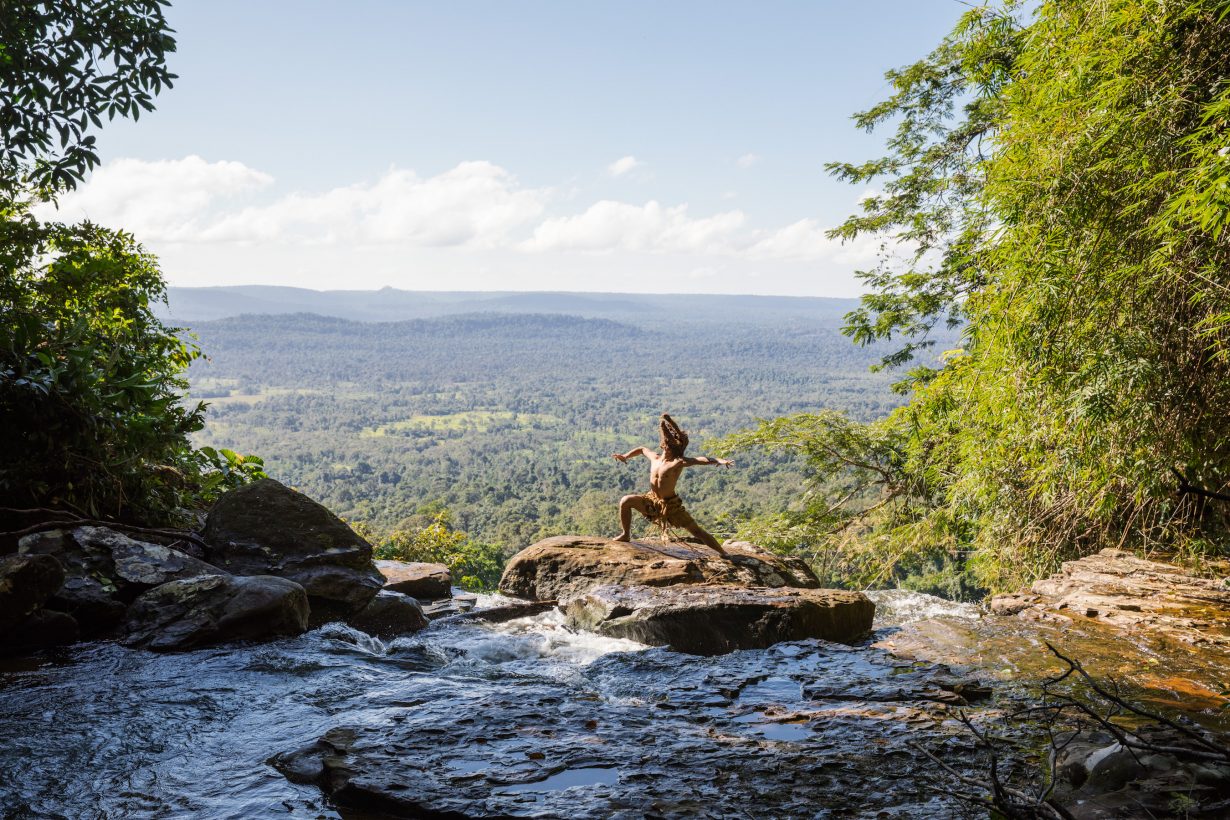Living Another Future at MAIIAM, Chiang Mai explores how land and people can be betrayed by the narratives told for them
The protagonist of Tuấn Andrew Nguyễn’s two-channel My Ailing Beliefs Can Cure Your Wretched Desires (2017) is dead but not wholly dead, speaking to us from the afterlife. “I was the last Javan rhino in Vietnam. The last Javan rhino on the Asian mainland. Our species is extinct,” it harrumphs, as Nguyễn’s prowling cameras pan around the rhino’s skeleton, before heading off to inspect Vietnam’s zoos, abattoirs and pet shops. Voiced by a Vietnamese male narrator, this disembodied rhino proves remarkably self-aware, especially when it comes to its murder by poachers so that its horn could be powdered down for use in traditional Chinese medicine. But what makes Nguyễn’s propulsive survey of human-animal relations in Vietnam doubly interesting is its dialogic format and tone of interspecies camaraderie. The feminine voice of a Yangtze giant softshell turtle (which ‘has a shot at escaping extinction’, according to The New York Times) interjects throughout; her comments about scientists in Vietnam discovering “two new species every week”, and help being on the way, intellectually leaven the rhino’s fighting talk: his desire for revolution and reincarnation as a “virus that infects every gram of animal horn being cut”. Tapping a vein of Vietnamese ecocriticism and animal fables, Nguyễn’s work doesn’t merely aestheticise violence or decry the ‘empty forest syndrome’ afflicting verdant swathes of Vietnam – it suggests that the solutions to such existential risks (if still attainable) lie in a dialectical clash of imaginations and unlikely new interspecies networks.
Living Another Future, a group show comprising eight works from across the Global South, ostensibly explores how certain real-world narratives – from histories of quackery and superstition to political doctrines and colonial conceits –are shaping and controlling others, and ‘ultimately betraying land and people’, as curator Zoe Butt writes in the exhibition text. In the adjoining room, for example, the deleterious effects of the mining interests and agronomic principles of Belgian colonialists on the Congolese population and landscape are broached by Sammy Baloji’s composite photographs (Memory, 2006) and film (Aequare: the Future that Never Was, 2023). Appearing next to that are Khvay Samnang’s mounted bronze animal masks and accompanying film: a response to a proposed hydropower dam that, had it been approved, would have destroyed the biodiversity and ancestral histories of one of Cambodia’s remaining forest ecosystems (Preah Kunlong [The way of the spirit], 2017–19).

Yet, as with Nguyễn’s work, their subjects are neither passive, nor resigned to their possible fates – both works are counter-spaces wherein hegemonic realities are unsettled. Baloji’s brooding film juxtaposes the propaganda of the Belgian Congo’s National Institute for Agronomics Studies – images of its comfortable houses, charming gardens and spacious laboratories – with modern-day footage of nature repossessing the infrastructure it left behind. Meanwhile, the strategy advocated for by Samnang’s majestic two-channel film relates to standing your ground. Or more precisely, dancing on it: Preah Kunlong’s twochannel video depicts a Khmer dancer embodying, through vine masks and patterned ticlike behaviours, the 11 animal spirits respected by Cambodia’s Chong minority. Filmed in the pristine Areng Valley, the dancer’s trancelike channelling of a peacock and Siamese crocodile, among other creatures, fits within the subversive field of counter-mapping; in the sense that it pinpoints the Chong’s symbiotic relationship with the land – a belonging and agency rooted in storytelling and memory, not arbitrary borders or orthodox ideas of ownership or scale – by theatricalising it.
The first work in the exhibition, and only painting, Ubatsat’s Burmica (2022), is a demonstrative act of solidarity-building: using metallic paint, the Chiang Mai-based Thai artist has transformed over 70 images sourced from Burmese history, including the Spring Revolution of early 2021, into a topsy-turvy, full-size reenactment of Picasso’s Guernica (1937). The spirit of transnational comradeship it establishes – your problem is my problem – runs like a thread throughout the wall texts accompanying each artwork, which are written responses by activists, artists and academics. Nearby, two photo series centre bodies in emancipatory acts designed to shake off unseen shackles: fundamentalist readings of faith and poverty, respectively. One depicts a hijab-clad woman struggling to put on various corsets, a clothing item also bound up with feminine ideals and gender oppression (Naiza Khan’s New Clothes for the Emperor I–VI, 2009); the other shows Bangkok’s homeless wearing hollowed-out wings while collecting rubbish or teetering atop buildings (Dansoung Sungvornveshapan’s Winged series, 2020).
This discursive survey of social and environmental issues across the Global South ultimately floats between being a knowledgebuilding exercise and a starter toolkit for overcoming subalternity, marginality or multispecies injustice. Do what feels right, many of these oppositional practices implicitly propose; develop new forms of armour, become a moving map via animalistic movements or, like the rhino and turtle, build once unimaginable alliances.
Living Another Future at MAIIAM, Chiang Mai, 24 May – 3 June
